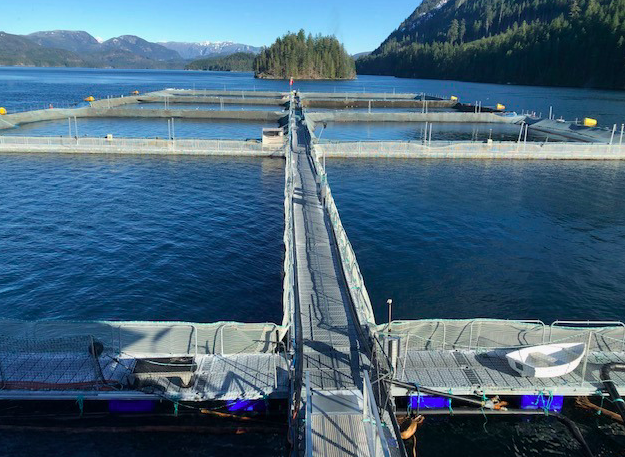“Three of our farms – Binns Island, Bawden Point and Ross Pass – all located within our Tofino operating area, are experiencing harmful algae blooms which are affecting our fish,” said Cermaq Canada Managing Director David Kiemele.
In a press release, Cermaq Canada writes that three of its farms located along the west coast of Vancouver Island, are experiencing mortalities due to harmful algae blooms in the area.
“We are seeing two particular types of algae in these regions – chaetoceros concavicornis and chaetoceros convolutes – which are both native to the Pacific Ocean. These particular algae have rigid “spines” that are harmful to fish when they come in contact with gills. Blooms are often associated with low dissolved oxygen events and warm ocean water temperatures and weather changes – all of which we are, or have been experiencing.”
The affected farms – Binns Island and Bawden Point located in Herbert Inlet and the Ross Pass farm, located in Ross Pass at the mouth of Herbert Inlet, have been taking measures to reduce the risk for fish in all three sites.
“In the case of algae, we have a number of tools we can use. The first is to minimize activity on the farm site to help lower any possible stress for our fish. We also slow or stop feeding our fish which helps to keep the fish at deeper depths, below the algae. We are running our upwelling system which helps to pump water from deeper oceans depths into the system, which helps to dilute the algae. In some cases, we can use algae skirting which is a physical barrier placed around the perimeter of the farm to a depth of several metres, which helps to prevent the algae from entering the system. In this case, the algae has entered the system, so skirts would not be effective,” added Kiemele.
Cermaq has earlier provided notice of the recent algae bloom and resulting mortalities to the Ahousaht First Nation, in whose territory these farms are operated.
“The fish are improving and that the water conditions are improving,” it wrote.


